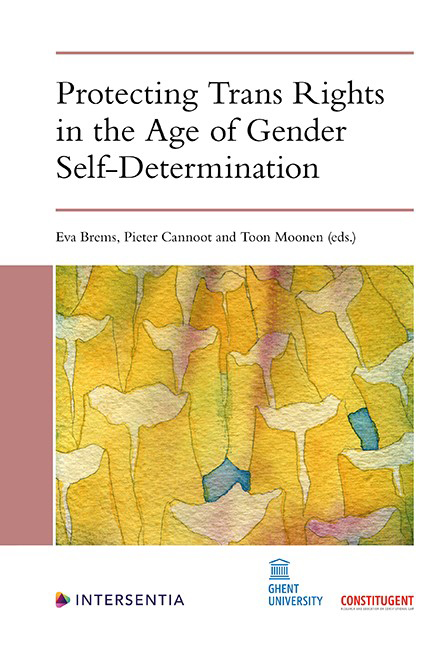Book contents
- Frontmatter
- Contents
- List of Cases
- List of Authors
- Introduction
- The Limits to Gender Self-Determination in a Stereotyped Legal System: Lessons from the Belgian Gender Recognition Act
- From Assigning Sex to Affirming Gender: Remarks on an Ongoing Evolution Affecting Gender Identification
- The Insufficiency of Gender Recognition Acts: The Example of Schooldays in Norway
- Developments in German Civil Status Law on the Recognition of Intersex and Non-Binary Persons: Subversion Subverted
- Framing Equality: Debating Protected Grounds in the Field of Trans and Non-Binary Rights
- ‘True Sex’: The Law and Confirmation of One’s Sex
- Index
- About the Editors
Framing Equality: Debating Protected Grounds in the Field of Trans and Non-Binary Rights
Published online by Cambridge University Press: 11 February 2021
- Frontmatter
- Contents
- List of Cases
- List of Authors
- Introduction
- The Limits to Gender Self-Determination in a Stereotyped Legal System: Lessons from the Belgian Gender Recognition Act
- From Assigning Sex to Affirming Gender: Remarks on an Ongoing Evolution Affecting Gender Identification
- The Insufficiency of Gender Recognition Acts: The Example of Schooldays in Norway
- Developments in German Civil Status Law on the Recognition of Intersex and Non-Binary Persons: Subversion Subverted
- Framing Equality: Debating Protected Grounds in the Field of Trans and Non-Binary Rights
- ‘True Sex’: The Law and Confirmation of One’s Sex
- Index
- About the Editors
Summary
INTRODUCTION
This chapter explores the appropriate characteristic through which law should protect transgender (trans) and non-binary populations from discrimination. In recent years, there has been a dramatic growth in public awareness of gender diversity and lives beyond the binary. From politics to the media, and from sport to culture, trans and non-binary individuals are increasingly evident across society – sometimes spearheading important movements for reform; but more ofter seeking a liveable life, free from prejudice and violence.
This growing social and political visibility of trans and non-binary experiences has – in some ways – been mirrored in emerging legal reform. Since 2002, an increasing number of jurisdictions across Europe, Asia and South America have permitted individuals to legally amend their gender status. This development means that, for persons who obtain formal gender recognition (as this process is known), national law acknowledges their identity and permits them to officially live in their self-identified status.
Yet, legal change for trans and non-binary communities has been neither consistent nor comprehensive – both in terms of the geographic reach of legal progress and the type of protections that such populations can enjoy. While domestic and regional human rights tribunals have emphasised the right to identity, there has been less agreement (and considerably more difficulty) in achieving explicit anti-discrimination protections. This relates to both the actual introduction of equality guarantees, as well as the question of how any such protection should be framed.
This chapter considers potential grounds for protecting trans and non-binary populations against discrimination. It explores three overarching characteristics – disability, sex and trans-specific categories – and it assesses their individual suitability as frameworks for safeguarding trans and non-binary lives. Engaging with the lived experience of gender diversity, and the forms of discrimination to which it gives rise, the chapter identifies both the merits and disadvantages in each of the disability, sex and trans-specific approaches. Although the chapter ultimately recommends gender identity as the optimal non-discrimination model, it acknowledges the potential utility of disability and sex – appropriately understood and applied – to defending the equality rights of trans and non-binary communities.
- Type
- Chapter
- Information
- Protecting Trans Rights in the Age of Gender Self-Determination , pp. 121 - 144Publisher: IntersentiaPrint publication year: 2020



